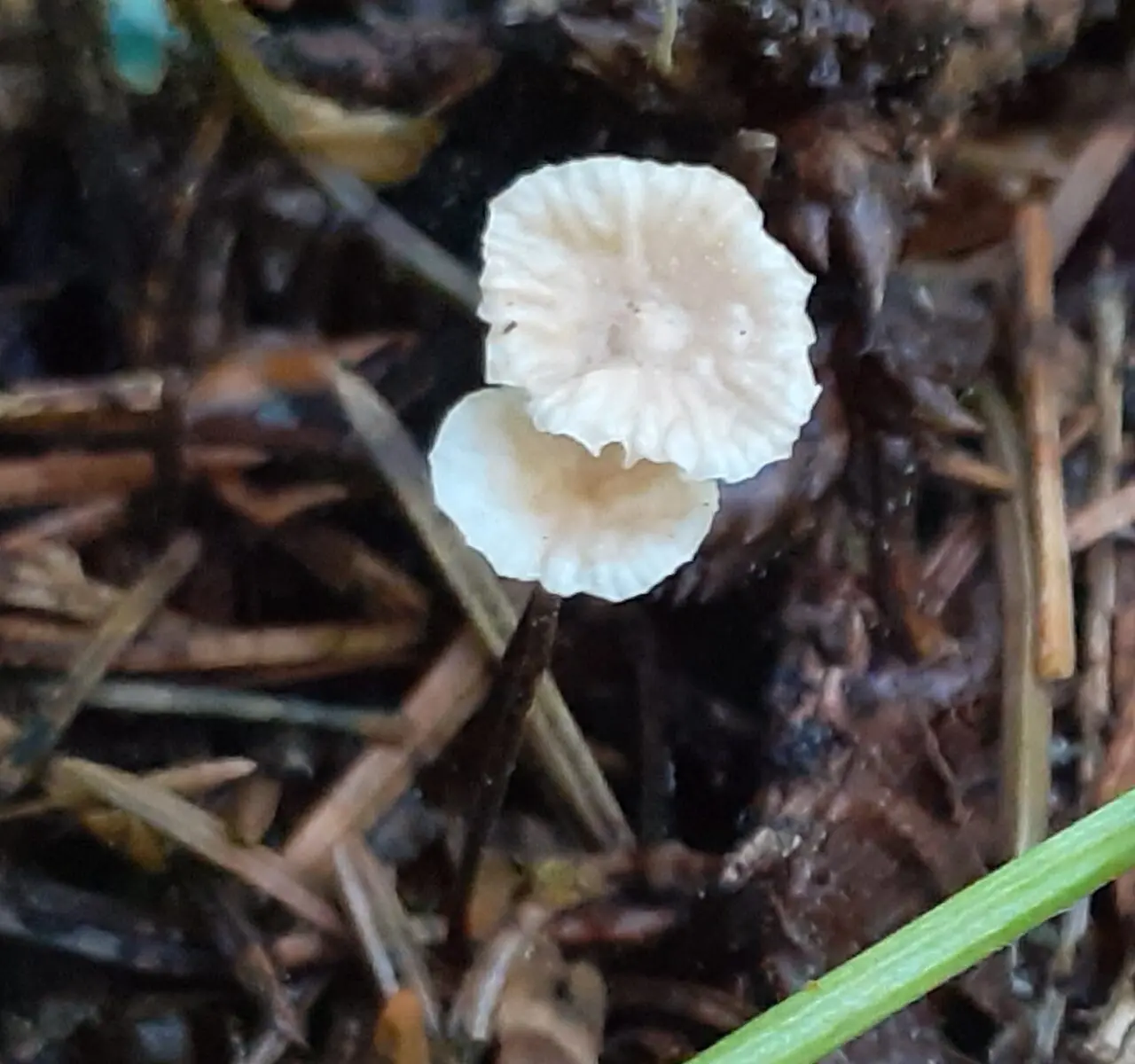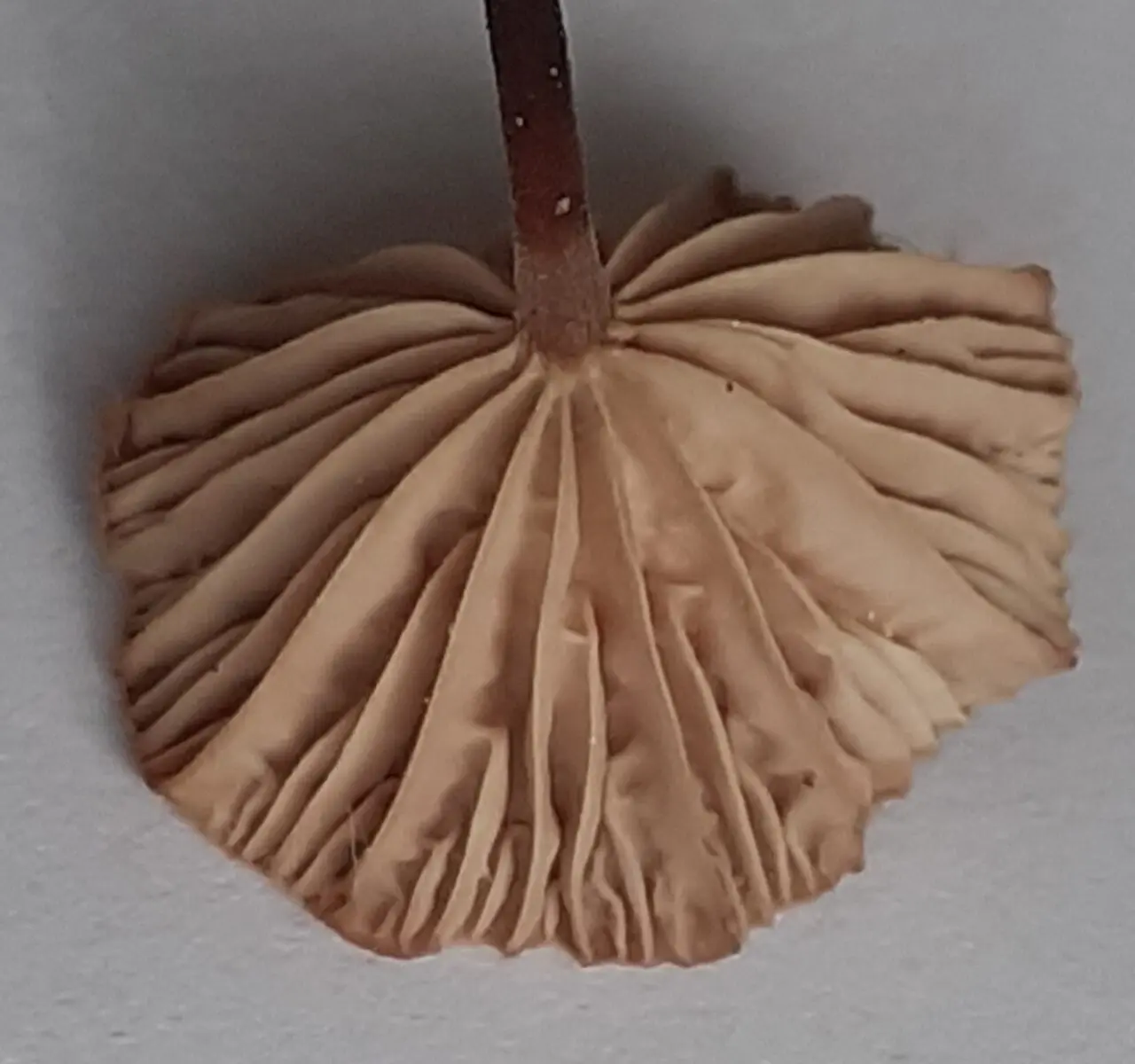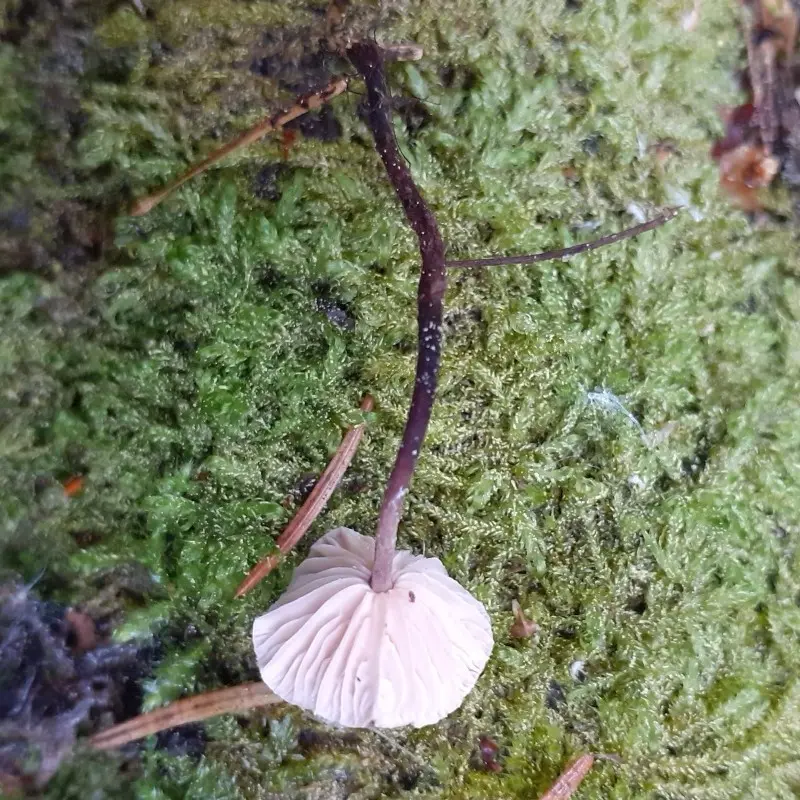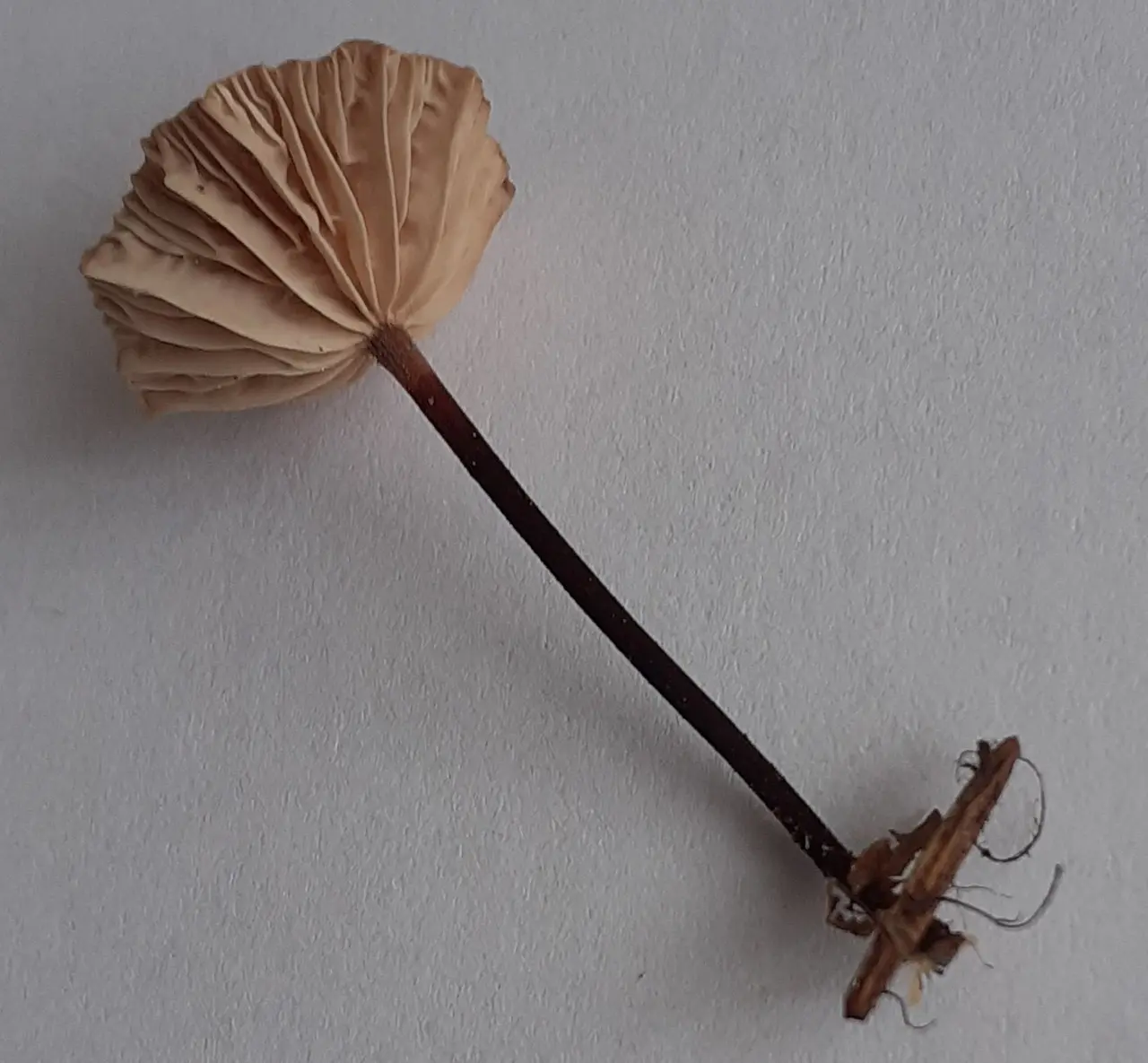Slitted micromphale (Paragymnopus perforans)
- Division: Basidiomycota (Basidiomycetes)
- Subdivision: Agaricomycotina (Agaricomycetes)
- Class: Agaricomycetes (Agaricomycetes)
- Subclass: Agaricomycetidae (Agaricomycetes)
- Order: Agaricales (Agaric or Lamellar)
- Family: Omphalotaceae (Omphalotaceae)
- Genus: Paragymnopus (Paragymnopus)
- Type: Paragymnopus perforans
:
- Agaricus androsaceus Schaeffer (1774)
- Agaric fir Batsch (1783)
- Agaric piercing Hoffmann (1789)
- Micromphale perforans (Hoffmann) Gray (1821)
- Marasmus piercing (Hoffmann) Fries (1838) [1836-38]
- Androsaceus perforans (Hoffmann) Patouillard (1887)
- Marasmius fir (Batsch) Quélet (1888)
- Chamaeceras piercing (Hoffmann) Kuntze (1898)
- Heliomyces perforans (Hoffmann) Singer (1947)
- Marasmiellus perforans (Hoffmann) Antonín, Halling & Noordeloos (1997)
- Gymnopus perforans (Hoffmann) Antonín & Noordeloos (2008)
- Paragymnopus perforans (Hoffmann) J.S. Oliveira (2019)

General remarks
In the modern classification, the species is separated into a separate genus – Paragymnopus and has the current name Paragymnopus perforans, but some authors use the name Gymnopus perforans or Micromphale perforans.
According to another classification, the taxonomy looks like this:
- Family: Marasmiaceae
- Genus: Gymnopus
- See: Gymnopus piercing
Small mushrooms that, under suitable weather conditions, can grow in large quantities on spruce needles.
head: Initially convex, then becoming prostrate, thin, smooth, brown, with a slight pinkish tinge in wet weather, fading to cream when dry, slightly darker in the center. The cap diameter is on average 0,5–1,0 (up to 1,7) cm.
Records: whitish, cream, sparse, free or slightly descending on the stem.

Leg: up to 3–3,5 cm high, 0,6–1,0 mm thick, light brown under the cap and further to dark brown and black, rigid, hollow, with pubescence along the entire length.

At the base, it has a slight thickening covered with dark hairs; thin black filaments of hyphae extend from the stem, which can practically be attached to the substrate (needle).

Pulp: thin, whitish to brownish, with a pronounced unpleasant smell of rotten cabbage (characteristic).
Споры: 5–7 x 3–3,5 µm, elliptical, smooth. The size of the disputes may vary among different authors. Spore powder: whitish-cream.
It occurs in coniferous or mixed forests, grows in large groups on the needles of coniferous trees – primarily spruce; there are also references to the growth on the needles of pine, cedar.
May to November.
Inedible.
Micromphale pitted differs from similar species in key features: the color of the cap and size (the height of the fungus is on average no more than 3 cm, the diameter of the cap is usually 0,5–1,0 cm), the presence of a putrid-sour smell and pubescence along the entire length of the stem, growth , usually on spruce needles.









